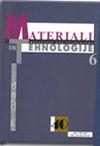基于分子动力学的路面密封胶界面附着力研究
IF 0.8
4区 材料科学
Q4 MATERIALS SCIENCE, MULTIDISCIPLINARY
引用次数: 0
摘要
为了从微观机理研究沥青混合料路面密封胶的性能,采用分子动力学模拟方法研究了基础沥青、sbs改性沥青和环氧树脂密封胶的物理性能以及密封胶-骨料界面的粘结性能。采用基于表面能理论的接触角试验方法,研究了密封胶路面裂缝墙体的粘结性。结果表明,该环氧树脂密封胶具有优良的粘接性能。与基础沥青和sbs改性沥青相比,其物理性能和界面附着力更显著。SBS的增加可以改善基础沥青的力学性能和界面相互作用。三种缝料与骨料的相互作用主要表现为物理吸附行为。范德华力对沥青裂缝密封胶-骨料界面的粘结行为有重要影响。静电力和范德华力对环氧树脂粘结剂-骨料界面的影响较大。90#基层沥青、sbs改性沥青和环氧树脂粘结剂对沥青路面裂缝壁的附着功分别为(37.76、44.86和77.63)mJ/m2。本文章由计算机程序翻译,如有差异,请以英文原文为准。
STUDY OF INTERFACIAL ADHESION OF PAVEMENT SEALANTS BASED ON MOLECULAR DYNAMICS
To study the performance of bitumen mixture pavement sealants from their micro-mechanisms, the physical properties of base bitumen, SBS-modified bitumen and epoxy resin sealant as well as the adhesive properties of sealant-aggregate interfaces were studied using a molecular dynamics simulation. The adhesion of a sealant-pavement crack wall was studied using a contact angle test based on the surface energy theory. The results show that the epoxy resin sealant has excellent adhesion properties. Its physical properties and interfacial adhesion work are more significant than those of base bitumen and SBS-modified bitumen. An increase in the SBS can improve base bitumen’s mechanical properties and interfacial interaction. The interaction between three kinds of crack sealants and aggregate is identified as mainly the physical adsorption behavior. The van der Waals force plays a significant role in the adhesion behavior of bitumen crack sealant-aggregate interface. In contrast, the electrostatic force and van der Waals forces significantly affect the epoxy resin binder-aggregate interface. The adhesion work of 90# base bitumen, SBS-modified bitumen and epoxy resin binder for the asphalt pavement crack wall is (37.76, 44.86 and 77.63) mJ/m2, respectively.
求助全文
通过发布文献求助,成功后即可免费获取论文全文。
去求助
来源期刊

Materiali in tehnologije
工程技术-材料科学:综合
CiteScore
1.30
自引率
0.00%
发文量
73
审稿时长
4-8 weeks
期刊介绍:
The journal MATERIALI IN TEHNOLOGIJE/MATERIALS AND TECHNOLOGY is a scientific journal, devoted to original papers and review scientific papers concerned with the areas of fundamental and applied science and technology. Topics of particular interest include metallic materials, inorganic materials, polymers, vacuum technique and lately nanomaterials.
 求助内容:
求助内容: 应助结果提醒方式:
应助结果提醒方式:


